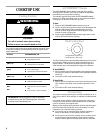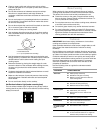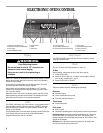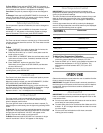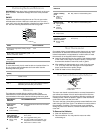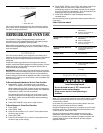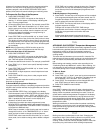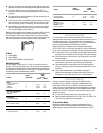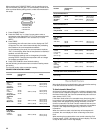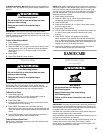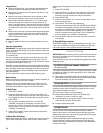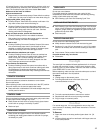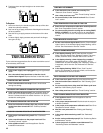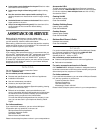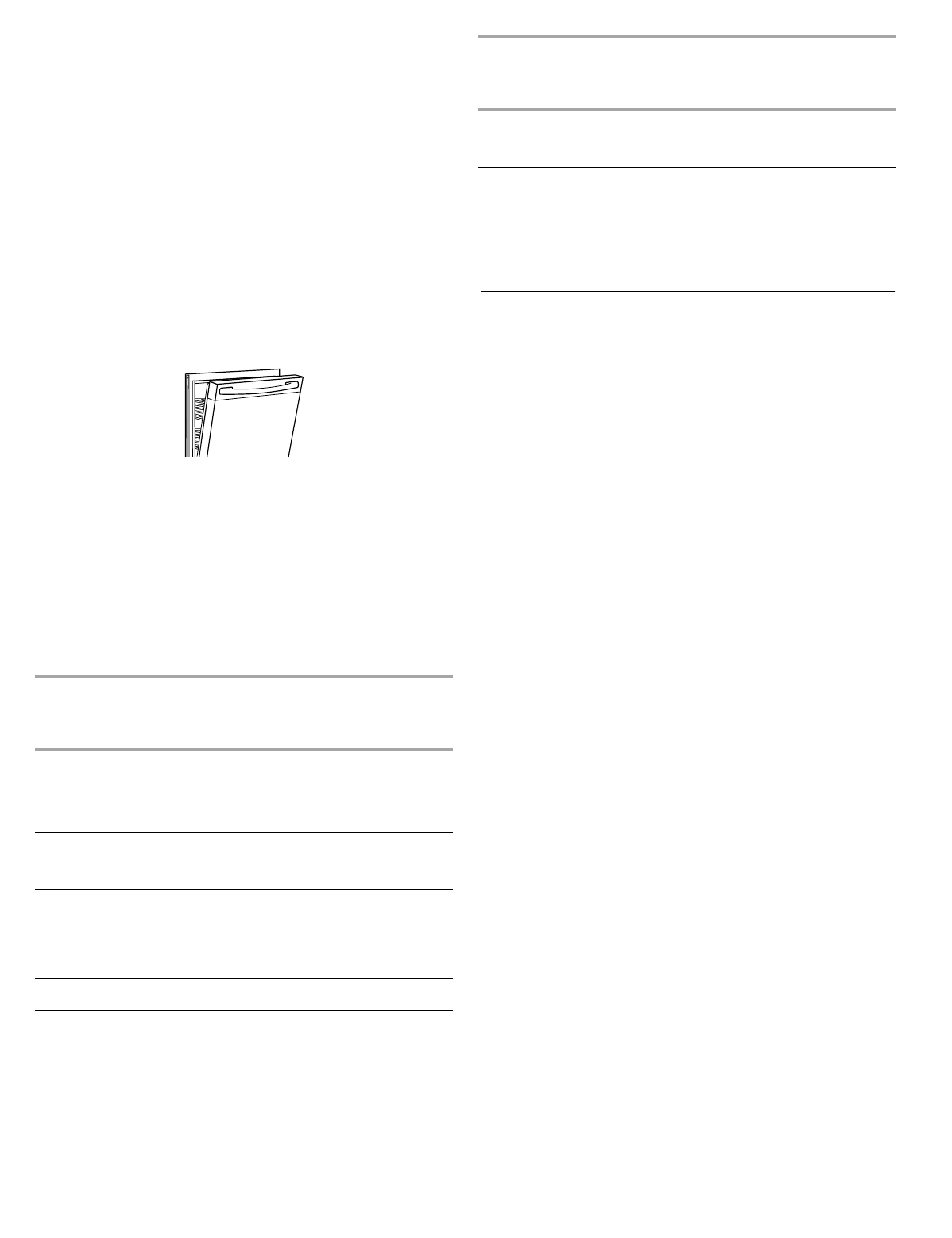
13
■
Use only the broiler pan and grid provided with the range. It is
designed to drain juices and help prevent spatter and smoke.
■
For proper draining, do not cover the grid with foil. The
bottom of the pan may be lined with aluminum foil for easier
cleaning.
■
Trim excess fat to reduce spattering. Slit the remaining fat on
the edges to prevent curling.
■
Pull out oven rack to stop position before turning or removing
food. Use tongs to turn food to avoid the loss of juices. Very
thin cuts of fish, poultry or meat may not need to be turned.
■
After broiling, remove the pan from the oven when removing
the food. Drippings will bake on the pan if left in the heated
oven, making cleaning more difficult.
Before broiling, position rack according to Broiling Chart. It is not
necessary to preheat the oven before putting food in unless
recommended in the recipe. Position food on grid in the broiler
pan, then place it in the center of the oven rack. Close the door to
the broil stop position to ensure proper broiling temperature.
To Broil:
1.
Press BROIL.
2.
Press START.
3.
Press STOP CANCEL when finished.
BROILING CHART
For best results, place food 3 in. (7 cm) or more from the broil
element. Times are guidelines only and may need to be adjusted
for individual foods and tastes. Recommended rack positions are
numbered from the bottom (1) to the top (5). For diagram, see the
“Positioning Racks and Bakeware” section.
Convection Cooking
In a convection oven, the fan-circulated hot air continually
distributes heat more evenly than the natural movement of air in a
standard thermal oven. This movement of hot air maintains a
consistent temperature throughout the oven, cooking foods more
evenly, crisping surfaces while sealing in moisture.
Most foods can be cooked at lower cooking temperatures
25°F to 50°F (14°C to 28°C) and cooking time can be shortened
by as much as 30 percent, especially for large turkeys and roasts.
■
It is important not to cover foods so that surface areas remain
exposed to the circulating air, allowing browning and crisping.
■
Keep heat loss to a minimum by only opening the oven door
when necessary.
■
Choose cookie sheets without sides and roasting pans with
lower sides to allow air to move freely around the food.
■
Test baked goods for doneness a few minutes before the
minimum cooking time with an alternative method such as a
toothpick.
■
Use a meat thermometer or a temperature probe to
determine the doneness of meats and poultry. Check the
temperature of pork and poultry in two or three places.
Convection Baking
During convection baking or roasting, the bake and broil
elements cycle on and off in intervals to maintain the oven
temperature, while the fan constantly circulates the hot air.
If the oven door is opened during convection baking or roasting,
the broil element and fan will turn off immediately and the bake
element will turn off in 2 minutes. They will come back on once
the door is closed.
■
For optimal cooking results, do not use aluminum foil.
■
Reduce recipe temperature 25°F to 50°F (14°C to 28°C). The
cook time may need to be reduced also.
To Convection Bake:
Before convection baking or roasting,
position the racks
according to the “Positioning Racks and Bakeware” section.
When using two racks, place them on rack positions 2 and 4.
FOOD
RACK
POSITION
COOK
TIME
minutes
Side 1 Side 2
Steak
1 in. (2.5 cm) thick
medium rare
medium
well done
4
4
4
14-15
15-16
18-19
7-8
8-9
9-10
*Ground meat patties
³₄
in. (2 cm) thick
well done 4 13-14 7-8
Pork chops
1 in. (2.5 cm) thick 4 20-22 10-11
Ham slice, precooked
¹₂
in. (1.25 cm) thick 4 8-10 4-5
Frankfurters
45-73-4
Lamb chops
1 in. (2.5 cm) thick 4 14-17 8-9
Chicken
bone-in pieces
boneless breasts
3
4
17-20
11-16
17-20
11-16
Fish
Fillets
¹₄
-
¹₂
in.
(.6-1.25 cm) thick
Steaks
³₄
- 1 in.
(2-2.5 cm) thick
4
4
8-10
16-18
4-5
8-9
* Place up to 9 patties, equally spaced, on broiler grid.
FOOD
RACK
POSITION
COOK
TIME
minutes
Side 1 Side 2




